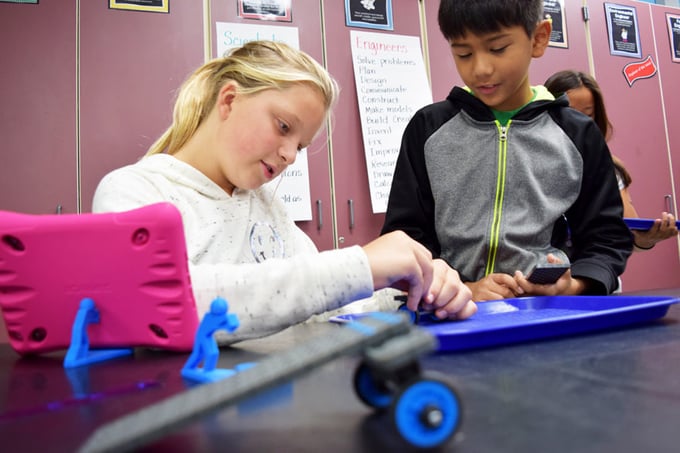Dr. Julie Cannizzo is the assistant superintendent of academic affairs for Goddard Public Schools in Goddard, Kansas. The district offers all five PLTW programs for students in K-12. PLTW honored Dr. Cannizzo with the PLTW Educational Leader of the Year award at PLTW Summit Indianapolis in February.
Many districts are looking to implement a comprehensive STEM education program or expand an existing STEM program they have in their district. Before implementation or expansion can occur, it’s vital educational leaders have a clear vision for what STEM education will look like in their district and a very strategic and well thought out plan for how to sustain such a program in the future.
Following a gradual release model, many districts will implement PLTW programs over time. Educational leaders will find soon after implementing a few modules or courses that teachers and students will be left wanting more! Teachers will inquire about growing the program and adding more modules or courses. Students will wonder what other exciting modules or courses are available next. Enrollment in PLTW programs will grow and educational leaders will be tasked with how to accommodate all of the students who are interested in engaging with PLTW curriculum.
It is important to think through what you want PLTW to look like in your district, not only today but 5, 10, 20 years down the road. How will you staff your program? Will your courses be taught by one STEM Specialist or multiple STEM Specialists? What will you do when your enrollment in a particular course triples the following year? How will you provide learning opportunities for these students? Is your district equipped to support this type of growth? How will your district fund PLTW? Will you fund it through general fund dollars? Grants? What happens when grants may no longer be available? Thinking through these questions and developing a solid implementation plan will help ensure the vitality of your PLTW programs.
In addition to having a well thought out strategic implementation plan, supporting teachers is critical to the success of the program, the teachers, and ultimately the students. Teachers need time to collaborate, to plan, to align standards both horizontally and vertically. They need time to experiment with the activities and lessons and to become familiar with the resources and the curriculum.
Educational leaders must provide this time to teachers! Allowing them to collaborate on professional development days or PLC days is not enough. They need strategically placed collaboration days where they are free from the many daily responsibilities that they have to truly focus on PLTW collaboration with their colleagues.
Educational leaders need to share with teachers that they may not have all of the answers – and that’s okay! We like to say that the PLTW experience helps students learn to fail forward. Students learn how to collaborate, problem solve, persevere, communicate, and fail. Failure is okay! The important part is that students pick themselves up and try again. This goes for our teachers as well. Sometimes teachers are uncomfortable with not having all the answers, and they need to hear from their leaders that it’s okay for them to fail forward, too.
Implementing a systemic PLTW program takes a clear vision, strategic planning and continued support for teachers. This combination will lead to a successful PLTW program – and successful teachers and students – for years to come!
PLTW’s blog intends to serve as a forum for ideas and perspectives from across our network. The opinions expressed are those of each guest author.


